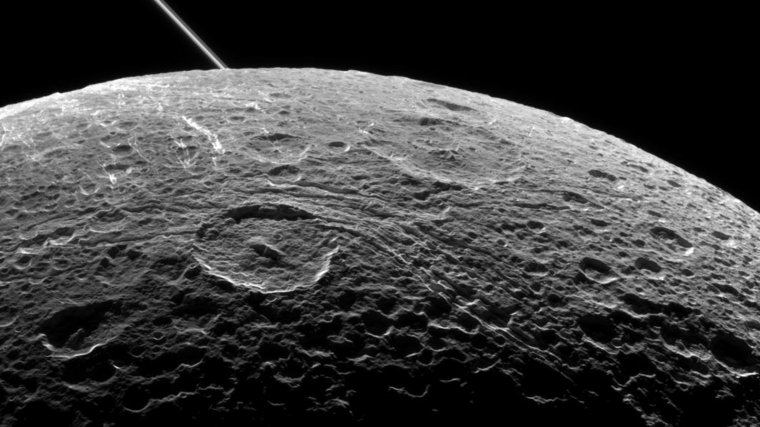| News / Space News |
Cassini to Make Last Close Flyby of Saturn Moon Dione
NASA | AUGUST 15, 2015
NASA's Cassini spacecraft will zip past Saturn's moon Dione on Monday, Aug. 17, the final close flyby of this icy satellite during the spacecraft's long mission.

A view of Saturn's moon Dione captured by NASA's Cassini spacecraft during a close flyby on June 16, 2015. ![]()
Cassini's closest approach, within 295 miles (474 kilometers) of Dione's surface, will occur at 11:33 a.m. PDT (2:33 p.m. EDT). Mission controllers expect fresh images to begin arriving on Earth within a couple of days following the encounter.
Cassini scientists have a bevy of investigations planned for Dione. Gravity-science data from the flyby will improve scientists' knowledge of the moon's internal structure and allow comparisons to Saturn's other moons. Cassini has performed this sort of gravity science investigation with only a handful of Saturn's 62 known moons.
During the flyby, Cassini's cameras and spectrometers will get a high-resolution peek at Dione's north pole at a resolution of only a few feet (or meters). In addition, Cassini's Composite Infrared Spectrometer instrument will map areas on the icy moon that have unusual thermal anomalies -- those regions are especially good at trapping heat. Meanwhile, the mission's Cosmic Dust Analyzer continues its search for dust particles emitted from Dione.
The previous close Cassini flybys yielded high-resolution views of the bright, wispy terrain on Dione first seen during the Voyager mission. Cassini's sharp views revealed the bright features to be a system of braided canyons with bright walls. Scientists also have been eager to find out if Dione has geologic activity, like Saturn's geyser-spouting moon Enceladus, but at a much lower level.
YOU MAY ALSO LIKE



